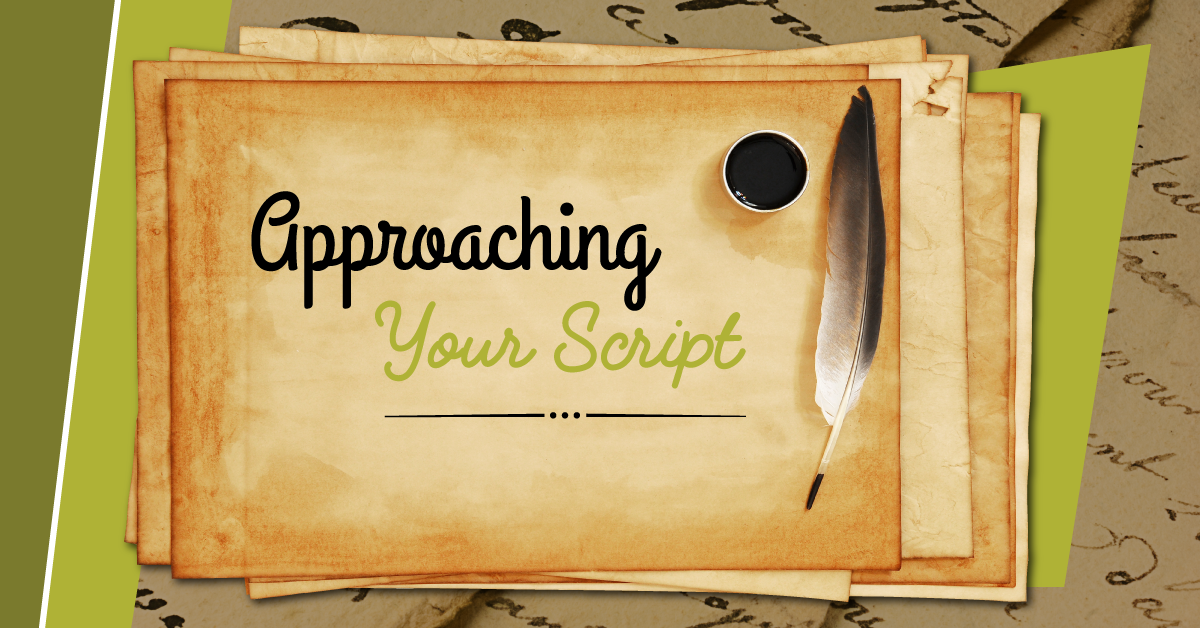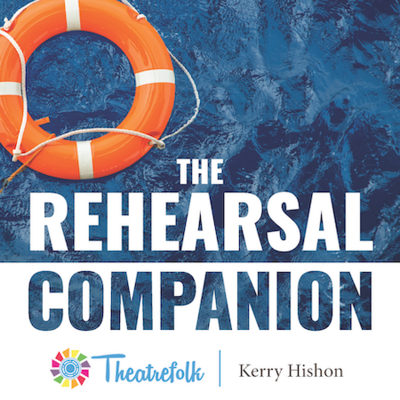Drama Teachers: Creating the Director’s Vision
Directors need to have a vision for the play. That means ALL directors: professional, community, high school, and middle school. Why is it important to have a vision?
- A vision gives the play a drive, a look, a tone.
- A vision creates a unifying factor—something that can be communicated not just through the text but through staging, lights, sets, sound, and costume.
- A vision helps students focus on the bigger picture. It’s more than learning lines and blocking.
- A vision gives a director purpose; it’s the creative element the director brings to the table.
Visions do not have to be complicated and esoteric. The simpler the vision, the easier it will be to convey to the cast, crew, and designers. There’s nothing wrong with a vision of fun and frivolity. Just make it clear and then be consistent with what you’re trying to achieve.
For Example:
I directed the original production of my Alice in Wonderland adaptation Alice. The line of dialogue that really jumped out at me after reading the book was from the tea party: ‘We’re all mad here so you must be, too.’ I thought it was interesting that Alice’s response was that she didn’t want to be mad, like she didn’t want a cold.
What was my vision?
My vision was to focus on the madness of Wonderland and see if the other characters could make Alice crazy as well. I created a huge physical division between the Wonderland characters and Alice. Alice was the only character with flesh showing–all the others were as inhuman as possible. I had a trio of girls play the Cheshire Cat instead of one to emphasize the fact that the cat wasn’t “real.” The Wonderland characters mistreated Alice at every opportunity; shoving her, towering over her, pinching her. They hissed at her from the darkness. She was not of their ‘world’ and the only way she could be is if she changed, becoming more like them. This is how I took my vision of “mad world” and translated it to the staging, to communicating acting choices, and to informing the costuming.
How Do I Find A Vision?
- Highlight the one word, image, or action that speaks to you in the script.
- Find music that represents the story and the main character.
- Give each character a colour.
- Find magazine pictures, pictures of art, sculptures—anything that can help you and everyone you talk to about the play to SEE the play.
- Create a scrapbook. The more visual the vision can be, the better.
Exercise #1
Go see a play and try to decipher the director’s vision. Write it out in one sentence. What is the director trying to say with his or her interpretation of the play? You might find that this is a difficult task and, if you do, think about why that is. If you can’t see a vision, maybe it’s because the director’s hasn’t created one.
Exercise #2
Take the script you’re working on. Describe the play using the five senses. What is the taste, touch, sight, sound, and smell of the play? How does describing the play in this way define the play for you? This is an excellent exercise for student directors who might have no idea that directors need a ‘vision.’
Exercise #3
Play ‘What If?’ with the text. That’s how many of the most interesting visions are born—a director simply said “what if” and then went for it! What if Romeo and Juliet took place today instead of in the 11th century? What if Sweeney Todd was set in a mental institution where the patients played their own instruments? What if the alienation of the main character was shown in the costumes, with everyone else in black?
Example:
What if Hamlet was played as a metaphorical contrast between LA and New York? Claudius and Gertrude are ‘LA’ people; they’re tan and wear bright colours. Polonius wears Hawaiian shirts and a bad toupee. Gertrude looks like she’s had a facelift. Claudius is Hamlet Sr.’s much younger brother so he’s closer to age and looks to Hamlet Jr.
Hamlet, on the other hand, is New York flung into a human being – he scowls, wears a lot of black (combat boots and a satchel), and smokes. Ophelia also dresses like this because she loves Hamlet. But hers is a more subtle, or really, a less successful look. She’s such an awkward girl. Maybe she hides the black under a bright sweater, so Polonius doesn’t find out. Maybe she has a secret tattoo. Both she and Hamlet have incredibly white skin in comparison to everyone else around them.
The new Denmark is kind of like a party—a luau where the Beach Boys are always playing and the light streams across the stage like bright sunshine. It’s a big change after much darkness. But is it really a party? Or has evil just papered over the darkness with fake cheer and brightness?
Colours: Bright vs Dark
Texture: Sun and Sand vs City steel
Sound: The Beach Boys vs hard guitar and drums
Sight: Bright colours, beach, but it looks like it’s trying too hard. There’s a fakeness to it. Also, Hamlet looking incredibly out of place on a beach.
Smell: It smells like the ocean, but a fake air freshener version of the ocean. There’s also the occasional “rotten” whiff.
Taste: Tropical Fruit and ice cream. But everything looks better than it tastes.
The play has a clear visual conflict. There’s a clear colour palate for costumes, lights, and set. There’s a defined sound to the play. There’s a set direction. There’s a very simple visualization of light and dark (which plays in opposite to who are the light and dark characters in the play). This is how a vision can work for you.
O** ne thing to always keep in mind…**
Remember that while the director’s vision is your own interpretation of the script, you have to stay true to the playwright’s intention. You can’t come up with a vision and then change the play to suit the vision.
Related Articles
The Student Director's Handbook
by Lindsay Price
Help students take their show from first audition to opening night with The Student Director’s Handbook. This easy-to-use ebook is full of guidelines, tips and templates designed to help students create a vision, circumvent problems and organize rehearsals on their way to a successful production.
The Rehearsal Companion
by Kerry Hishon
You’ve chosen the play, paid the royalties, done the script analysis, held your auditions, and cast the show. Tomorrow is the first rehearsal. Are you ready? Really ready? The Rehearsal Companion can help!





